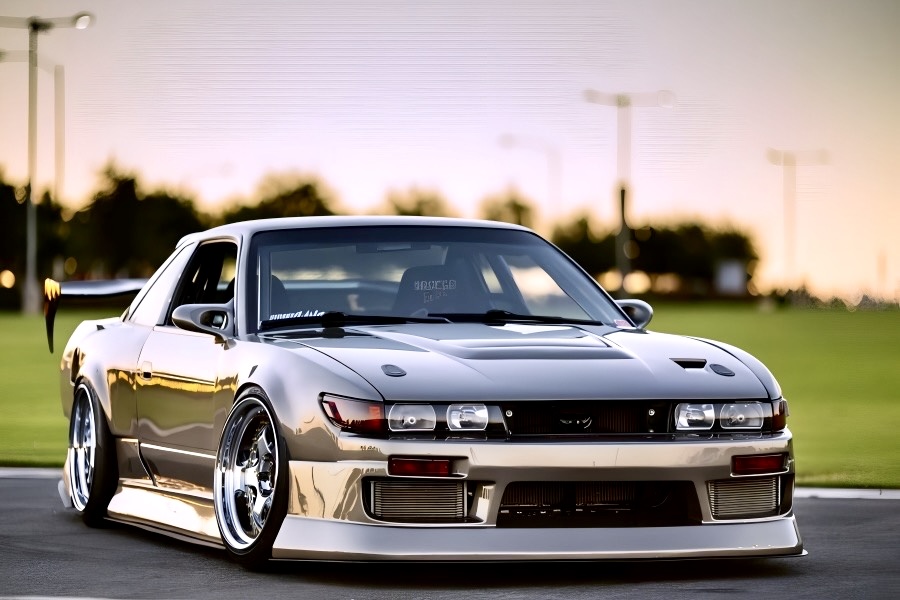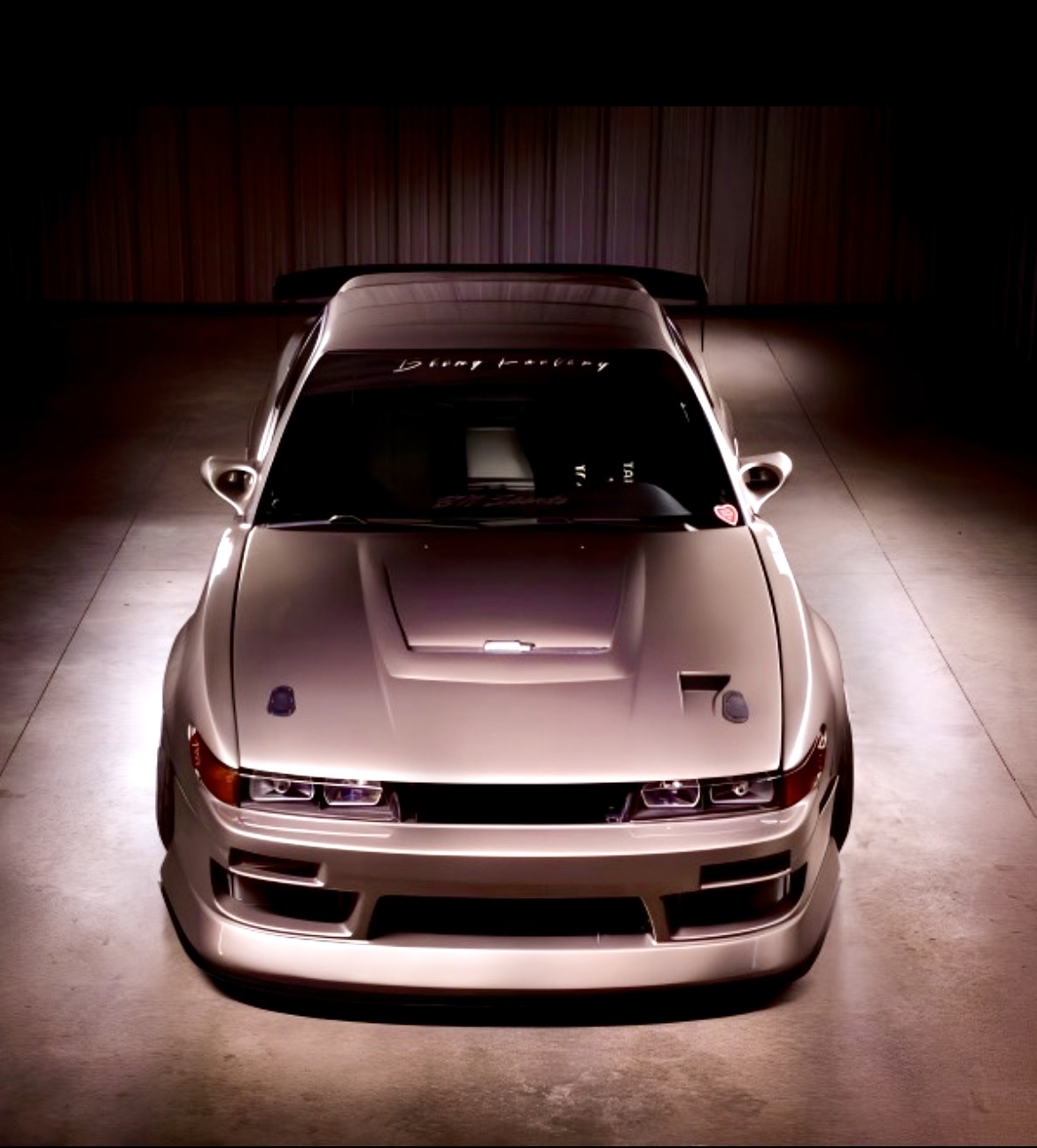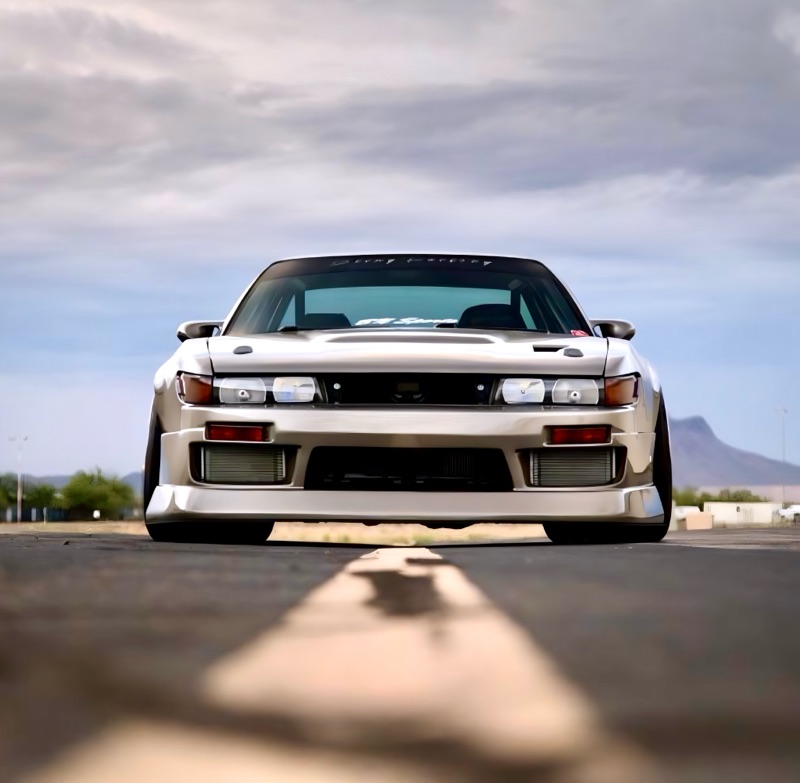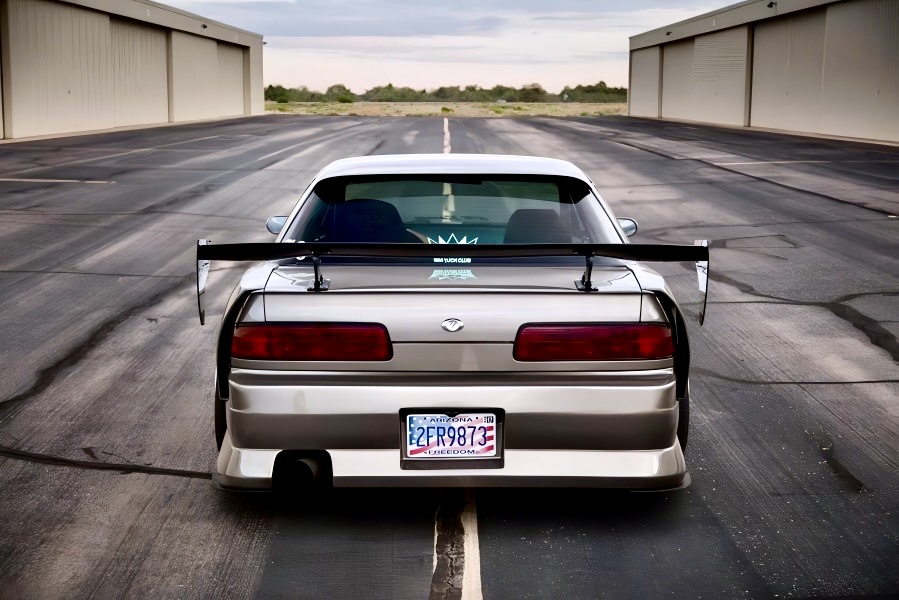1989 Nissan 240SX with S13 Silvia front end and LS7 GM V8
1989 Nissan 240SX “LS13” – JDM Roots with American Muscle

At its core, the 1989 Nissan 240SX was Nissan’s answer to the affordable, rear-wheel-drive sports car market in the U.S.—a lightweight platform, independent suspension, and the classic long-hood, short-deck layout. But enthusiasts quickly discovered that under the modest KA24E engine lay a goldmine of tuning potential. And that’s where the story of this wild build begins.


This particular 240SX takes things to a whole new level. Fitted with an S13 Silvia front end, it pays homage to its JDM sibling—the sleek dual-projector headlights, sharper body lines, and more aggressive fascia instantly transform the U.S.-spec fastback into a true street icon. The “Silvia face” not only looks cleaner but connects the car back to its Japanese roots, where the S13 reigned as a drift king in the early ‘90s.
But under the hood? That’s where things go full outlaw.
Swapped with a 7.0L LS7 V8 from GM, this build throws tradition to the wind. Originally found in the Corvette Z06, the LS7 delivers over 500 horsepower of raw American muscle—naturally aspirated, high-revving, and brutally torquey. It’s a powerplant that transforms the nimble S13 chassis into a tire-shredding monster, capable of overwhelming grip in any gear.

1989 Nissan 240SX “LS13”: The USDM S13 That Sparked a Drift Revolution
When it hit American shores in 1989, the Nissan 240SX was marketed as a sporty, affordable coupe—but few could have predicted its future cult status. Known internally as the “LS13”, the 1989 model was Nissan’s answer to the growing demand for stylish, rear-wheel-drive sports cars in North America. While it never received the same factory firepower as its JDM cousins, its potential for tuning made it a legend in the underground scene—and a gateway drug to the world of drifting.
What Is the “LS13”?
The term “LS13” is a fan-created hybrid referencing the Left-hand drive (LHD) version of the S13 chassis, sold as the 240SX in the U.S. The actual Nissan chassis code is S13, but the LS13 nickname is used to differentiate the American model from the JDM Silvia S13, which came with different engines and styling options.

Engine and Performance
The 1989 240SX shipped with the KA24E engine—a 2.4L SOHC inline-four making about 140 hp and 152 lb-ft of torque. While reliable, the KA24E was often criticized for being more truck engine than sports car motor. Enthusiasts quickly began engine swapping, often importing SR20DET motors from JDM Silvias or going wild with V8 conversions.
Stock Specs:
- Engine: KA24E 2.4L SOHC I4
- Horsepower: 140 hp @ 5,600 rpm
- Torque: 152 lb-ft @ 4,400 rpm
- Transmission: 5-speed manual / 4-speed automatic
- Drivetrain: Rear-wheel drive
- 0-60 mph: ~8.5 seconds

This kind of East-meets-West mashup isn’t just about performance—it’s a statement. It represents the evolution of the tuning scene, where borders blur and car culture becomes global. The LS13 may ruffle feathers among purists, but for many, it’s the ultimate hybrid: JDM soul, muscle car heart.
Built for the street, the strip, or the track, this 1989 Nissan 240SX is proof that the best builds don’t follow the rules—they rewrite them.
Tuning and Drift Legacy
Despite its modest stock performance, the 1989 LS13 became a tuning icon. In the early 2000s, it exploded in popularity thanks to:
- Drift culture from Japan making its way to the U.S.
- Affordable aftermarket support for coilovers, turbo kits, and body mods.
- Abundant supply of used 240SXs in junkyards and classifieds.
Many of today’s top drifters—like Chris Forsberg and Ryan Tuerck—got their start in 240SXs. Its lightweight chassis, rear-wheel-drive layout, and low cost of entry made it the perfect platform for grassroots motorsports.
Collector’s Value and Buying Tips
With the supply dwindling and demand rising, clean examples of the 1989 240SX are going up in value. If you’re looking to buy one, here are a few tips:
- Rust check: Look under the rear quarter panels, frame rails, and strut towers.
- Engine swaps: Many have been heavily modified—check if swaps are done properly.
- Transmission: Manual models are more desirable and command a premium.
- Originality vs. project: Decide if you want a stock classic or a mod-ready shell.
Comments
Post a Comment